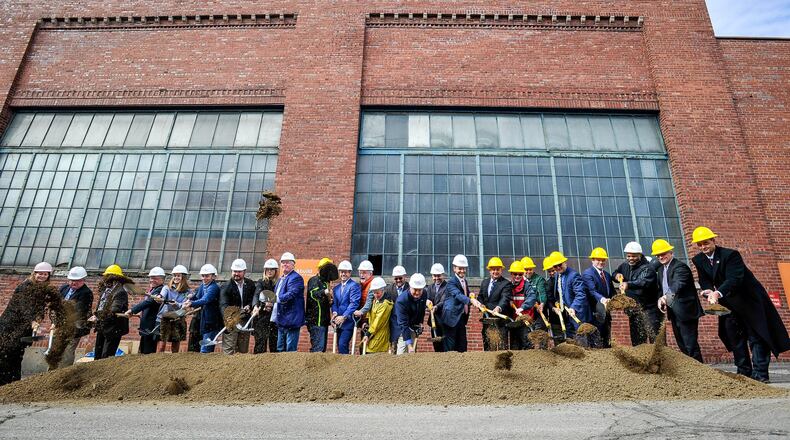“Hamilton has decided to make a substantial investment, so this is a way we can complement that,” Rogers said.
The city has asked the commissioners to chip in $2.5 million and Butler County Visitors Bureau another $2.5 million to support the mega Spooky Nook sports complex. The entire project is estimated to cost $144 million — including a more than $26 million investment by Hamilton for loans, construction, utility and road improvements and more.
RELATED: Butler County hires legal expert for Spooky Nook
Hamilton Mayor Pat Moeller said he is pleased.
“I’m very pleased that they are involved,” Moeller said. “They are a partner with us on many, many projects so I’m glad they’re part of this one.”
The county has been on a healthy budget trajectory for several years now after years of bloated budgets, unrestrained spending and borrowing. In 2015 the commissioners introduced their debt-free by 2020 plan, a measure projected to save taxpayers $2.1 million.
Once debt-free the commissioners said they will be free to offer major financial assistance to other local governments county-wide. Hamilton is the first.
Commissioner Don Dixon told the Journal-News the economic development fund they intend to set up will likely be in the $1 to $5 million range, but each request will be judged on its merits.
“It’ll depend on what projects come up, if it’s a big project, creates a lot of jobs then we can go to the max,” Dixon said. “If we don’t have any projects that create a huge amount of jobs but still has an economic development impact, it’ll be gauged, we three commissioners will take a look at it and determine how much of that we want to support.”
According to an economic analysis performed by Tourism Economics, an Oxford Economics Company, Spooky Nook’s Pennsylvania complex had $15.5 million in revenues last year, with another $5 million at the Warehouse Hotel within the sports complex. The company last year had about 150 full-time employees and as many as 450 part-time seasonal workers.
MORE: Butler County asked for $5 million to support Spooky Nook mega complex
More than 1.1 million people (470,000 from outside the immediate area) visited the Pennsylvania site in 2017.
The commissioners hired an attorney a couple weeks ago to help them do their due diligence on Spooky Nook but County Administrator Charlie Young said that is no longer necessary.
“We’re collaborating with Hamilton to help build infrastructure that’s necessary to support the Spooky Nook project,” Young said. “Since we’re investing in roads there was no necessity to perform the due diligence related to the buildings and project.”
The money won’t be available until the debt is expunged but Dixon said he doesn’t think that’ll be a problem.
“I think they intend to bring the road improvements on later in the project,” Dixon said. “It should meet their timing.”
The goal is to open the complex on the Great Miami River in the old Champion Paper mill in 2021. The city broke ground last month, a day after the development agreement was signed.
The county owed almost $92 million in general fund debt obligations in 2009 so the commissioners have increased the debt payment amounts and refinanced debt to lower interest rates since they instituted the debt plan. Finance Director Tawana Keels has assured the commissioners that balance will be zero by the end of 2020.
The original debt reducing plan showed about $15 million in debt still on the books in 2020, with repayments scheduled out to 2032. Keels recommended the commissioners authorize paying about $2 million in accelerated payments each year. The old schedule had the county paying off about $8 million a year. The plan called for bond and note payments of $9 million to $10 million annually.
About the Author
